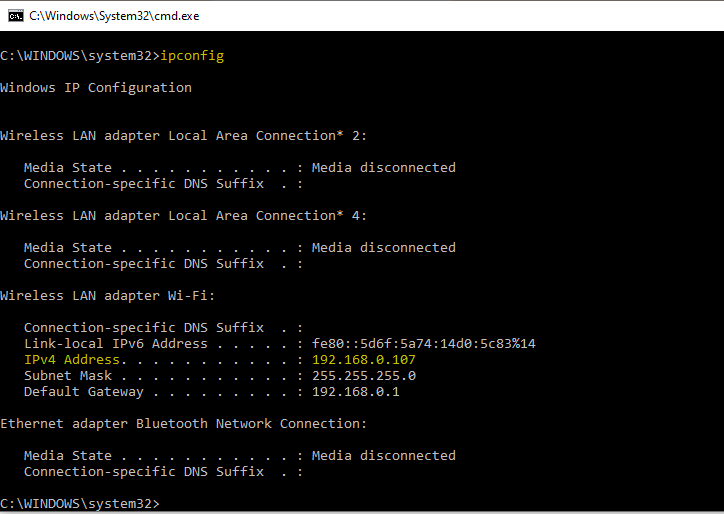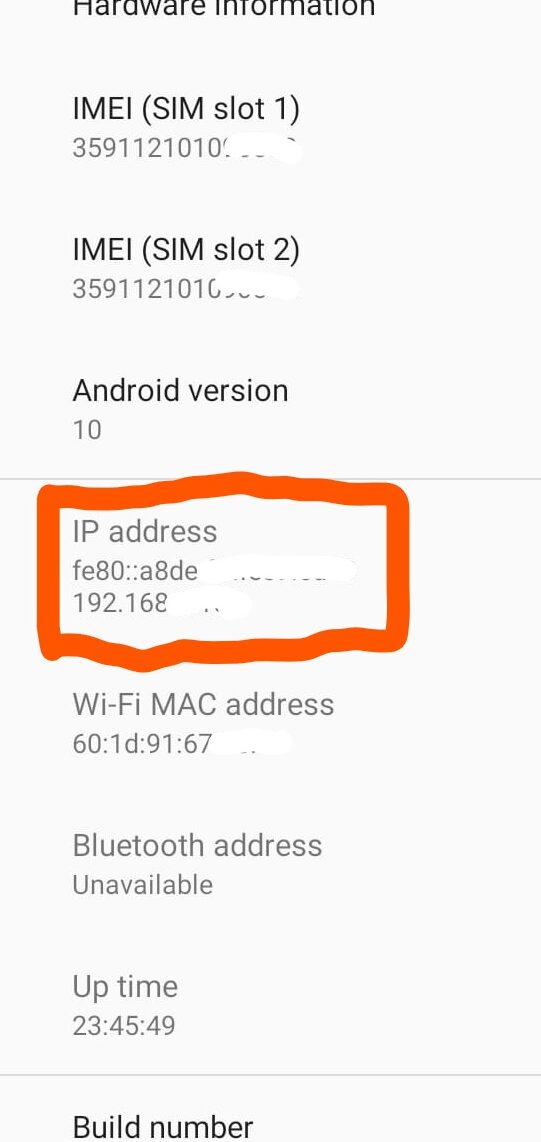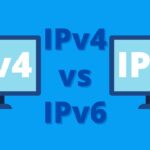Before understanding the Internet Protocol version 4 (IPv4) and Internet Protocol version 6 (IPv6) lets understand what is an IP Address.
What Is an IP Address?
An IP (Internet Protocol) address is a unique address that identifies a device on the internet or a local network. Every device which is connected to internet like desktop, laptop, server, modem, router, smartphone, tablet, scanner, printer, smart speaker and smart TV is assigned an IP address. The IP addresses allow these devices to connect to one another and transfer data on a local network or over the internet. Most IP addresses are purely numerical label such as 192.168.1.100 that uniquely identifies a specific interface on the network but as the usage of internet grows, alphabetical letters have been added to some addresses.
All IP addresses are binary numbers but expressed in decimal form (IPv4- 192.168.1.1) or hexadecimal form (IPv6- fe80:5d6f:5a74:14d0:5c83:4534:4cfg) to make reading and using them easier for humans. IP addresses are not random generated. They are mathematically generated and issued by the IANA (Internet Assigned Numbers Authority), is a non-profit organization that was established in 1998 to help maintain the security of the internet and allow it to be usable by all people over the world.
What Is IPv4?
IPv4 is a version 4 of Internet Protocol (IP). It is the most commonly used IP address. It is a 32-bit address written in four numbers, each ranging from 0 to 255, which are separated by periods called octet. For example IPv4, cybermeteoroid’s IP address is 151.106.124.247. It is considered the primary Internet Protocol and carries 94% of Internet traffic. IPv4 store more than 4 billions addresses. But as the internet expanded and went global, we quickly ran out of addresses, Today’s era of smartphones, smart television, smart printer and IoT devices all are required an IP to connect internet. To solve the capacity issues of IPv4, engineers introduced a new version of IP called IPv6.
Key features of IPv4 are:
- IPv4 requires less memory.
- Ease of remembering addresses.
- IPv4 support VLSM (Variable Length Subnet mask)
- IPv4 Support SNMP Protocol.
- IPv4 Uses ARP(Address Resolution Protocol) to map to MAC address.
- It has checksum fields, which is used to measure the error in header.
What Is IPv6?
IPv6 is the latest version of Internet Protocol (IP). It is next generation Internet Protocol standard which will replace IPv4 in future. IPv4 store only 4 billions IP addresses. But as the internet expanded and went global, we quickly ran out of addresses that why we need IPv6. IPv6 address consists of eight groups of four hexadecimal digits. Example IPv6 address: 5601:0ca7:75×3:0000:0100:8b1e:0310:7537
IPv6 is based on 128-bit addressing and capable of support 340 undecillion (340 trillion3 addresses).
Key features of IPv6 are:
- Simplified, more efficient routing
- Easier administration (no more DHCP)
- Stateful and Stateless configuration
- No more private address collisions
- No more NAT requirement
- Built-in authentication and privacy support.
Difference between IPv4 and IPv6 | IPv4 vs IPv6
| IPv4 | IPv6 |
| It Stand for Internet Protocol Version 4 | It Stand for Internet Protocol Version 6 |
| 32 bit IP Address | 128 bit IP address |
| In IPv4, addresses must be reused and masked | In IPv6, all IP addresses are unique |
| IPv4 is capable of storing 4.29×109 address space | IPv6 is capable of storing 3.4×1038 address space |
| In IPv4 Address representation is in decimal | In IPv6 Address representation is in hexadecimal |
| Checksum field is available in IPv4 | Checksum field is not available in IPv6 |
| It is a numeric address that consists of 4 fields which are separated by dot | It is an alphanumeric address that consists of 8 fields, which are separated by colon |
| IPv4 IP address has classes like Class A, Class B, Class C, Class D, and Class E | IPv6 IP address does not contain classes |
| IPv4 does not provide any encryption and authentication. | While IPv6 provide encryption and authentication. |
| It is broadcasting | It is multicasting |
| The size of header length of IPv4 is 20 bytes | The size of header length of IPv6 is 40 bytes |
| For IP address configuration it uses DHCP and manual configuration | For IP address configuration it uses renumbering and DHCPv6 |
| Example of IPv4 is 192.168.0.100 192.168.0.100/24 (With Prefix notation) | Example of IPv6 is 5EEE:56DE:6CFG:780T:AB00:CGBJ:8976:47KJ 5EEE:56DE:6CFG:780T:AB00:CGBJ:8976:47KJ/24 (With Prefix notation) |
Is there any IPv5 also?
In short No, After IPv4 we moved to IPv6 and skipped the IPv5, main reason is that IPv5 doesn’t exist. Initially IPv5 was the 5th version of the Internet protocol that was developed to stream voice data and video but it was never known as IPv5. It was known as Internet Stream Protocol (ST-II or ST2). The major issue IPv5 had was that it used the same IPv4 addressing and had the same limited number of IP addresses. Due to these problems it never brought into the public domain.
How to find IPv4 and IPv6 IP addresses of your device?
The easiest way to check your IPv4 and IPv6 address is to search “What is my IP address?” on Google, and it will show you, yours IPv4 and IPv6 both IP addresses at top. Or you just click on this link to know your IPv4 and IPv6 IP addresses👉 https://whatismyipaddress.com

In Windows OS
Open command prompt (just type “cmd” in windows search bar)
Type “ipconfig” in command prompt and you will get your both IPv4 & IPv6 IP addresses.

In Android phone
Go to phone settings.
Click About Phone and you will get your both IPv4 & IPv6 IP addresses.

In IPhone
Go to phone settings.
Select Wi-Fi and click the “i” in a circle () next to the network you are on – the IP address should be visible under the DHCP tab.

In MAC OS
Go to System Preferences
Select network – and the both IPv4 & IPv6 IP information should be visible.

Related Topics
What is an IP address?
Difference between Public and Private IP Address.
What is DNS Server and How Its work?
What is Ports and Protocols in computer networks?
How Proxy Server hides IP Addresses?
What is Firewall?


I’m still learning from you, as I’m trying to reach my goals. I definitely love reading everything that is posted on your website.Keep the posts coming. I loved it!